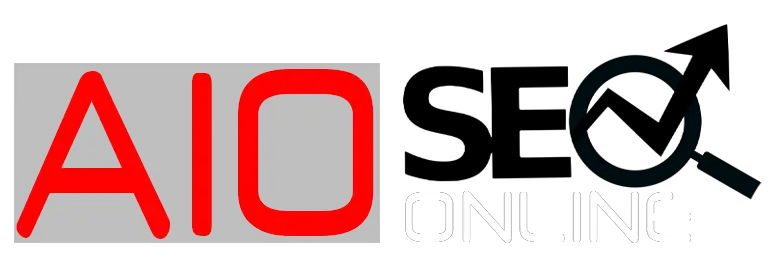Strict Guidelines are imperative for creating high-quality SEO content that ranks well, drives traffic, and meets user intent. Adhering to these guidelines ensures your content is not only optimized for search engines but also valuable and trustworthy for your audience. In the competitive world of digital marketing, understanding and applying strict SEO content guidelines is essential for standing out and boosting online visibility.
Understanding the Importance of Strict Guidelines in SEO Content
SEO content creation involves more than just stuffing keywords. Strict guidelines help maintain a balance between optimization and readability, which is crucial for both search engines and users. Adhering to these rules increases your chances of ranking higher in search engine results pages (SERPs) and provides a better user experience.
Well-structured content guided by standards such as proper keyword placement, avoidance of plagiarism, and logical organization can improve engagement metrics like bounce rate and time on page. These signals contribute to better rankings, as Google and other search engines increasingly prioritize user-friendly content [Moz Beginner’s Guide to SEO].
Following strict guidelines also aids in content consistency, which is essential when managing large websites or multiple content authors. Tools like the All in One SEO Online plagiarism checker plagiarism-checker help ensure originality, which is vital in avoiding penalties from Google or losing trust among your audience.
Key Components of Strict SEO Content Guidelines
Strict SEO guidelines cover multiple aspects of content creation. These components help ensure your posts are comprehensive, relevant, and aligned with search engine requirements:
Keyword Optimization
- Main Keyword Placement: Position your primary keyword within the first 120 words, in at least two headings, and the conclusion.
- LSI Keywords: Incorporate Latent Semantic Indexing (LSI) keywords naturally to enhance content relevance and context.
- Keyword Density: Maintain a keyword density between 1-2% to avoid keyword stuffing. Tools like the keyword-density-checker can help monitor this.
- Keyword Variations: Use synonyms and related phrases to diversify keyword usage and reach a broader audience.
Content Structure and Readability
- Headings and Subheadings: Organize content using H2 and H3 tags for clarity and SEO benefits.
- Paragraph Length: Keep paragraphs concise, ideally between 50-100 words, improving readability.
- Lists and Tables: Integrate bulleted lists and tables to present complex information clearly, aiding user understanding.
- Transition Words: Use connective words and phrases to improve flow and engagement.
Originality and Plagiarism Prevention
- Unique Content: Ensure all content is 100% original. The All in One SEO plagiarism checker is ideal for verifying uniqueness.
- Proper Citation: When referencing external sources, credit them appropriately with authoritative links.
- Content Rewriting: Use tools such as the article rewriter to help create fresh content from existing materials.
Technical SEO Elements
- Meta Tags: Craft compelling and descriptive meta titles and descriptions using the AI SEO Meta Title Generator and Description Generator.
- URL Structure: Use SEO-friendly URLs with hyphens and relevant keywords; optimize URLs using the URL Rewriting Tool.
- Sitemap and Robots.txt: Submit XML sitemaps and configure robots.txt to guide crawlers effectively, using the XML Sitemap Generator and robots.txt generator.
- Page Speed: Optimize loading times using tools like the Page Speed Checker as fast sites rank better and offer superior UX.
Implementing Strict Guidelines Using All in One SEO Online Tools
The All in One SEO Online platform offers an extensive suite of free tools designed to help creators adhere to strict SEO content guidelines. Leveraging these tools can streamline the SEO content creation process and boost your website’s ranking potential effectively.
Content Originality and Quality Assurance
- Plagiarism Checker: Use the plagiarism-checker to detect duplicate content, ensuring your posts are authentic.
- Article Rewriter: If you need to refresh old content, the article rewriter helps generate unique variations without compromising the message.
Keyword Research and Optimization
- Keyword CPC Calculator: Evaluate the cost-per-click value of your target keywords with the keyword-cpc-calculator to prioritize high-value keywords.
- YouTube Keyword Extractor: For video content optimization, utilize the YouTube keyword extractor.
- Keywords Suggestion Tool: Discover relevant keyword ideas that complement your main keyword using the keywords suggestion tool.
On-Page SEO Enhancements
- Meta Tag Generator: Create optimized meta tags with the meta-tag-generator.
- Meta Tags Analyzer: Analyze existing meta tags for SEO effectiveness with the meta tags analyzer.
- Keyword Position Checker: Monitor your keyword rankings in SERPs using the keyword-position-checker.
Technical SEO Tools
- XML Sitemap Generator: Ensure all your important pages are indexed properly by generating a sitemap via the XML sitemap generator.
- Robots.txt Generator: Configure crawler access appropriately using the robots.txt generator.
- Backlink Checker and Maker: Develop a strong backlink profile by tracking existing links with the backlink checker and creating new links via the backlink maker.
- Page Speed Checker: Optimize the load time of your site using the page-speed-checker, an important ranking factor.

